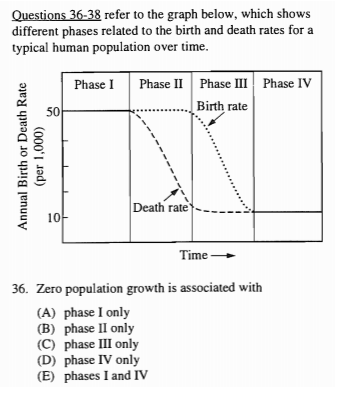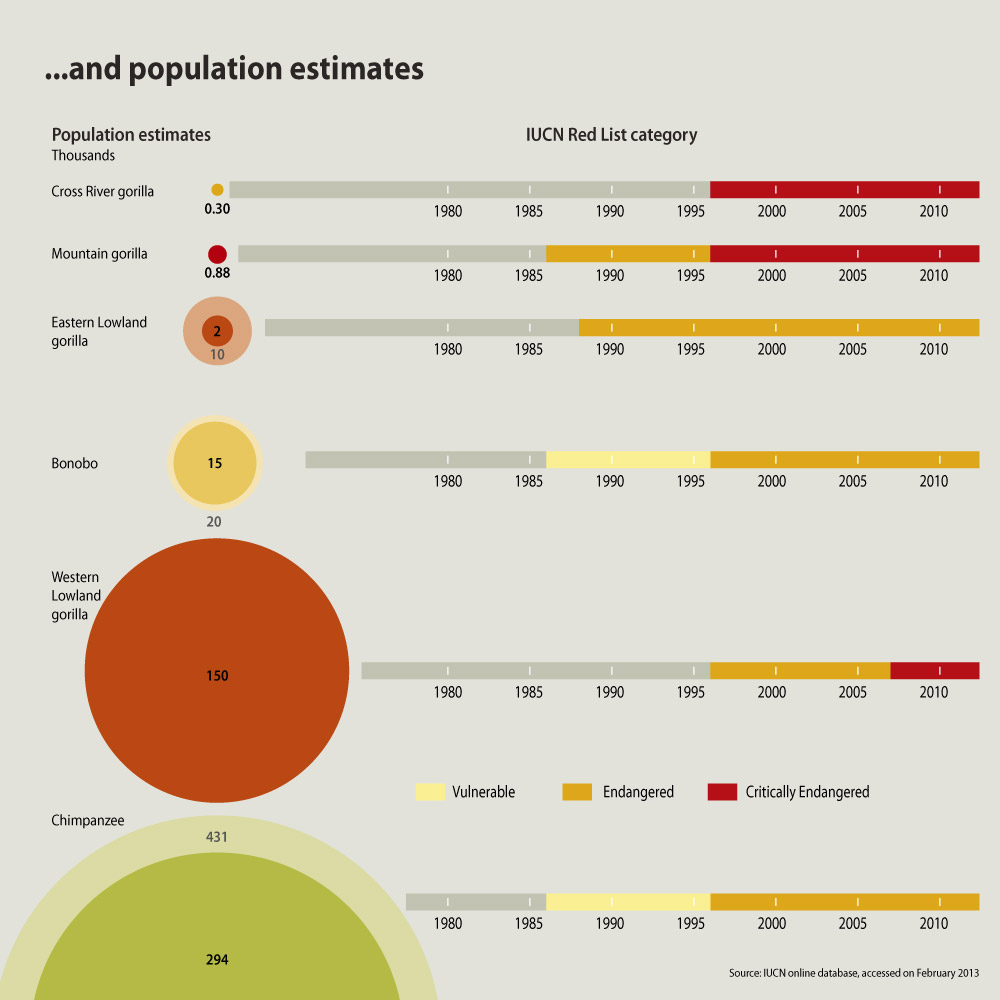Apes Which F the Following Best Explains the Graph Above
Refers to the number of species at each trophic level and the number of trophic levels in the community. 32 Which of the following best explains how the milkweed bugs coloration helps it avoid being eaten by birds.

Ap Environmental Science Exam 1 1998 Part 2 Flashcards Quizlet
In part a s tudents were asked to explain the change decline in per capita MSW as depicted in the graph and calculate the percent increase in total MSW from 2000 to 2012.

. A likely cause of the overall increase in the insect population over time is. Two lines on the same graph one describing Total MSW created and the other describing the Per Capita MSW created. Up to 24 cash back Which of the following best explains the high birth rate in stage 2 in contrast to the rapidly declining death rate.
The picture below shows the extent of summer Arctic Sea ice in 1979 and 2005. I Determine the concentration of CO 2 in ppm recorded at Mauna Loa in 2005. The graphs above show the population size and distribution of beak sizes in a finch population on the island of Daphne Major in the Galapagos in 1976 and 1978.
Read the following article from the Fremont Examiner. APES Unit 5 Quiz 1. Larger-beaked finches are better suited for cracking larger seeds and nuts.
Up to 24 cash back APES GRAPH MC Name. Iii Explain what the trend in relative abundance of native hardstem lovegrass and the invasive fountain grass over the -year period implies about each species ability to withstand drought conditions. A The herbicides are fat soluble and accumulate in groundwater.
Which of the following best describes a natural process that adds carbon dioxide into the atmosphere. Smaller-beaked finches are better suited for eating grasses and small seeds. 11th - 12th grade.
A Refer to the graph above to answer the following questions. Which of the following statements best explains the changes in the size and composition of the population of. A For one new disease and one old disease named in the article above explain how the disease is transmitted through the human population and describe an effective method for controlling the spread of.
Select the one lettered choice that best fits each statement. Which of the following is the most likely explanation of how herbicides affect amphibians. A Use the graph above to answer the following questions.
Number and label each axis. Which of the following conclusions is best supported by the data. B Seed production is higher in dense populations.
The graphs above show the population size and distribution of beak sizes in a finch population on the island of Daphne Major in the Galapagos in 1976 and 1978. Which of the following statements best explains the changes in the size and composition of the. A There is no relationship between seed production and habitat fragmentation.
H Birds are unable to locate the bugs head so the bug can escape. All of the above statements are true. Projected rates are shown for 2020 to 2040.
Draw a smooth best-fit line for each data set. Up to 24 cash back used but you should use what works best for the given data. Earths climate is gradually warming.
G Birds associate the bugs coloration with its bad taste and avoid eating it. The graph below shows the solar power generated in one day in a town in Germany in the month of July. The graph below shows the total fertility rates as measured from 1950 to 2020.
Titles should explain exactly what the graph is showing and are sometimes long. 1Stage 1 2Stage 2 3Stage 3 4Stage 4 5None of the above 24The US would be currently in 1Stage 1. The graph above shows how seed production in a plant species varied with population density in an unfragmented habitat site A and in a fragmented habitat site B.
Questions 8-11 refer to the following answers. APES Biodiversity Unit 2 2019 DRAFT. If there are multiple sets of data on one graph use a different color for each.
Increase sea level would reduce the size of the habitat patches. Which of the following best describes the trends seen in the total fertility rates for the world population from 1950 to the projected rates in 2040. Memorize flashcards and build a practice test to quiz yourself before your exam.
Base your answers to questions 24 and 25 on the demographic transition graph below. Arctic Sea ice is migrating away from Earths poles. Up to 24 cash back the graph.
To 2012 was presented in graphical form. Some studies have indicated that global amphibian populations are declining and that exposure to herbicides in agricultural runoff is implicated in the decline. Which of the following best helps explain the observation.
Global warming is caused by human activity not nature. 1 point for identifying from the graph the correct value of concentration of CO 2 recorded at Mauna Loa in 2005 380 ppm -5 ppm ii Determine the pH recorded at Station ALOHA in 2005. As shown in the graph above.
Played 0 times. F Birds become confused by the bugs coloration so the bug has time to escape. B The herbicides act as a plant nutrient causing.
Which of the following best describes how a homeowner using an off-the-grid PV solar system as seen in the graph above can power a home between 900 PM and 600 AM. Based on the data in the graph identify the change in the diference from average temperature in the Arctic between 1980 and 2016. C Explain how a loss of species diversity would affect.
2 hours ago by. Biodiversity Topic Questions DRAFT. Please respond on separate paper following directions from your teacher.
Which of the following is a possible effect of global climate change as illustrated in scenario 1. Describe the diference in the change in temperatures in the Arctic with the change in global temperatures from 2000 to 2016. The graphs above show the population size and distribution of beak sizes in a finch population on the island of Daphne Major in the Galapagos in 1976 and 1978.
Which hypothesis is best supported by the changes in sea-ice coverage. Start studying the apes - unit 8 C flashcards containing study terms like Which of the following examples includes both a point and a nonpoint source of pollution Which of the following is a point source pollutant that would likely affect the ecosystem health of a coral reef Which of the following. Carbon dioxide is released from the interior of earth during volcanic eruptions.

10 Hardest Ap Environmental Science Questions Collegevine Blog

Great Apes Population Estimates Grid Arendal

Ap Environmental Science Population Growth Curve Analysis Carolina Com
0 Response to "Apes Which F the Following Best Explains the Graph Above"
Post a Comment